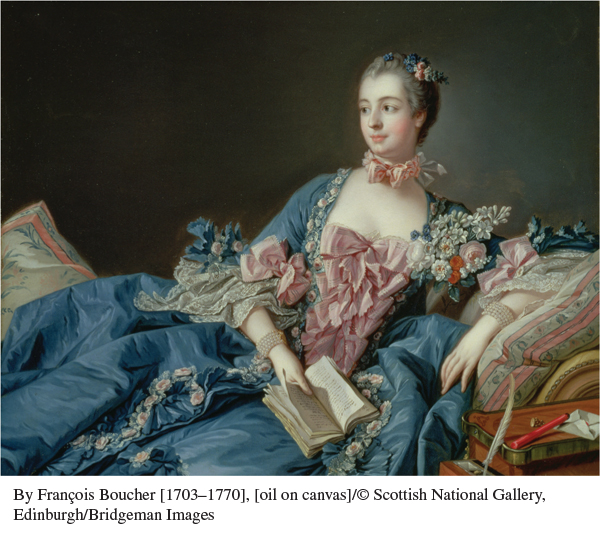A History of Western Society: Printed Page 526
A History of Western Society, Value Edition: Printed Page 510
A History of Western Society, Concise Edition: Printed Page 530
Women and the Enlightenment
Dating back to the Renaissance querelle des dames, the debate over women’s proper role in society and the nature of gender differences continued to fascinate Enlightenment thinkers. Some philosophes championed greater rights and expanded education for women, claiming that the position and treatment of women were the best indicators of a society’s level of civilization and decency.10 In Persian Letters, Montesquieu used the oppression of women in the harem, described in letters from the wives of Usbek — one of the Persian voyagers — as a potent symbol of the political tyranny he identified with the Persian Empire. At the end of the book, the rebellion of the harem against the cruel eunuchs Usbek left in charge serves to make Montesquieu’s point that despotism must ultimately fail.
In the 1780s the marquis de Condorcet, a celebrated mathematician and contributor to the Encyclopedia, went so far as to urge that women should share equal rights with men. This was an extremely rare position. Most philosophes accepted that women were inferior to men intellectually as well as physically. They sought moderate reform at best, particularly in the arena of female education, and had no desire to upend men’s traditional dominance over women.
From the first years of the Enlightenment, women writers made crucial contributions both to debates about women’s rights and to the broader Enlightenment discussion. In 1694 Mary Astell published A Serious Proposal to the Ladies, which encouraged women to aspire to the life of the mind and proposed the creation of a women’s college. Astell also harshly criticized the institution of marriage. Echoing arguments made against the absolute authority of kings during the Glorious Revolution (see Chapter 15), she argued that husbands should not exercise absolute control over their wives in marriage. Yet Astell, like most female authors of the period, was careful to acknowledge women’s God-
The explosion of printed literature over the eighteenth century (see “Urban Culture and Life in the Public Sphere”) brought significant numbers of women writers into print, but they remained a small proportion of published authors. In the second half of the eighteenth century, women produced some 15 percent of published novels, the genre in which they enjoyed the greatest success. They represented a much tinier proportion of nonfiction authors.11
If they remained marginal in the world of publishing, women played a much more active role in the informal dimensions of the Enlightenment: conversation, letter writing, travel, and patronage. A key element of their informal participation was as salon hostesses, or salonnières (sah-
Elite women also exercised great influence on artistic taste. Soft pastels, ornate interiors, sentimental portraits, and starry-

Women’s prominent role as society hostesses and patrons of the arts and letters outraged some Enlightenment thinkers. According to Jean-
Rousseau’s emphasis on the natural laws governing women echoed a wider shift in ideas about gender during this period, as doctors, scientists, and philosophers increasingly agreed that women’s essential characteristics were determined by their sexual organs and reproductive functions. This turn to nature, rather than tradition or scripture, as a means to understand human society had parallels in contemporary views on racial difference. Just as writers like Rousseau used women’s “natural” passivity to argue for their subordinate role in society, so Kant and others used ideas about non-